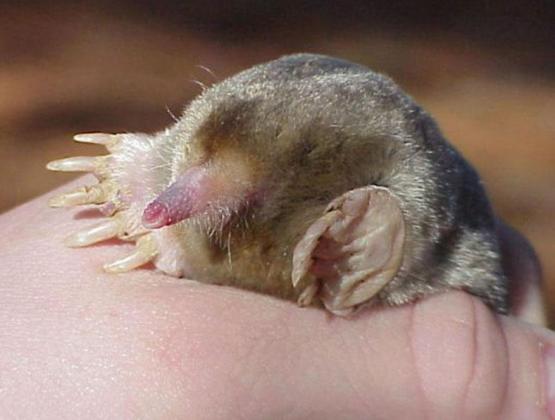
Dan Gill/LSU AgCenter horticulturist
I live in an area that is rural, transitioning into suburban. In many areas of the state, developers are building more and more new subdivisions in areas that were once wooded or open fields. People moving to these new subdivisions from more urban areas are often startled to encounter wildlife they never saw in the cities, such as deer, raccoons, armadillos, opossums and moles.
You may even live in an older subdivision with a nearby wooded area. After years of never having a problem with nuisance wildlife, you may find that the situation changes when the wooded area is developed. Displaced wildlife may move into areas where they were not previously an issue.
Dealing with nuisance wildlife is rarely easy or simple. Typically, a careful study of the life habits of the animal is necessary in order to control the animal effectively. Eliminating the nuisance animal often requires considerable time and effort, if it is even practical. Gardeners may have to modify how they garden or what they grow or where they can grow it in some situations.
Some animals only occasionally earn the dubious distinction of “nuisance wildlife” when their habits interfere with human activities. The Eastern mole fits this category almost any time it invades landscapes because of its burrowing activities while engaged in feeding and traveling. The following information is provided by retired LSU AgCenter nuisance wildlife specialist Don Reed.
Although these moles remove many damaging insects and grubs from lawns and gardens, their burrowing habits disfigure lawns and parks, destroy flower beds, tear up the roots of grasses and create havoc in small garden plots.
Moles are insectivores, closely related to shrews and bats. Their hairless, pointed snout, small eyes and concealed ear canal openings, as well as large forefeet and webbed toes, all are physical adaptations to the underground world of these animals. A mole’s powerful forelimbs allow it to move materials 32 times its body weight and to move through most soils at incredible speeds of 15 to 18 feet per hour in unexcavated ground and up to 80 feet per minute through existing runs.
Moles spend the majority of their time in search of insects, grubs and earthworms, eating approximately 70 to 100 percent of their weight each day. The roots, tubers and bulbs damaged in lawns and gardens are not eaten but are simply a casualty in this carnivorous predator’s search for food.
Moles live a secluded life in underground burrows, coming to the surface only rarely, and then often only by accident. They are thought to be loners. And when several are trapped in close proximity to each other, it is believed that different tunnel net-works sometime come together and join otherwise separate burrows.
Moles prefer loose, moist soil, and they are most often found in soils shaded by vegetation. They are not able to function in compact, dried soils. While more or less active year-round, moles are busiest during rainy summer periods, finding and storing foods.
Their gestation period is 42 days, with three to five young born mainly in March and April. A mole’s secluded underground life tends to protect it from predators. Spring floods are considered the greatest threat to adult moles and their young.
Control measures
Traps and poisons are considered the most effective methods for controlling moles. Choker type or harpoon type traps can be set in active runways to kill moles as they travel in search of food.
Several toxicants are labeled for mole control, with applications targeted for active runways. A common poison marketed for mole control, called Poison Peanuts, uses zinc phosphide as the active ingredient. This poison uses a grain-based carrier system, so ingestion by the moles is thought to be more of an incidental occurrence, given the insectivorous lifestyle of the animals.
Recent research also has shown that the anticoagulant poison bromethalin works as an energy metabolism antagonist, providing an effective way to exploit the high-energy demands of the mole’s active lifestyle.
Further research showed that when formulated to look and feel like an earthworm, the bait is readily accepted. This product is marketed under the trade name Talpirid. Another advantage of Talpirid is that the plastic-like formulation allows it to hold together and remain effective in moist soil conditions, unlike the older grain-based poisons.
When using either traps or poisons, care must be taken to ensure that an active tunnel is targeted rather than one that has been abandoned. Active tunnels can be located by crushing in the earth on several tunnels and returning the next day to determine where the soil is raised back up. That would indicate active tunnels.
Like most nuisance wildlife removal endeavors, patience and persistence must be practiced in order to be successful in removing these burrowing critters from your landscape.
